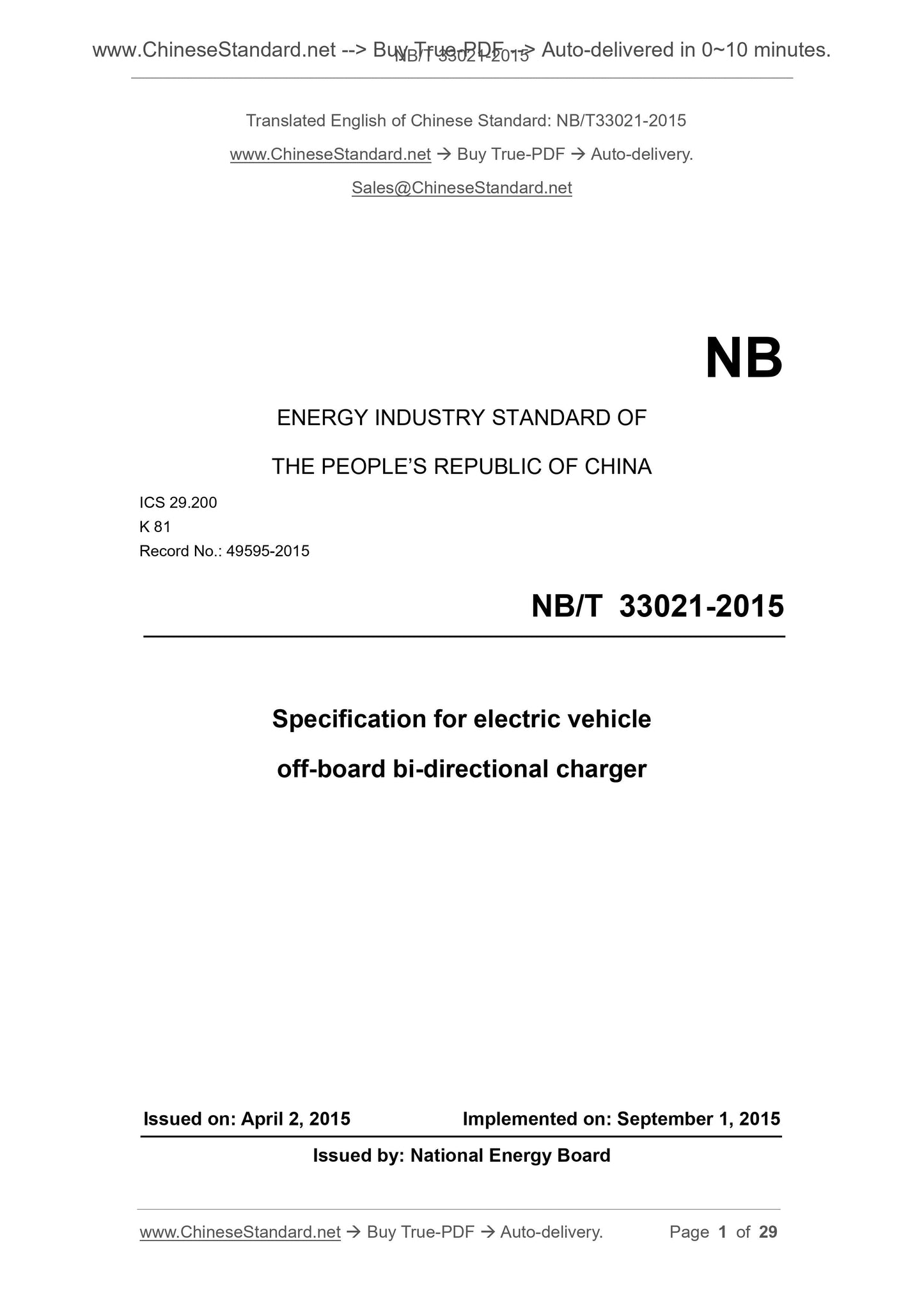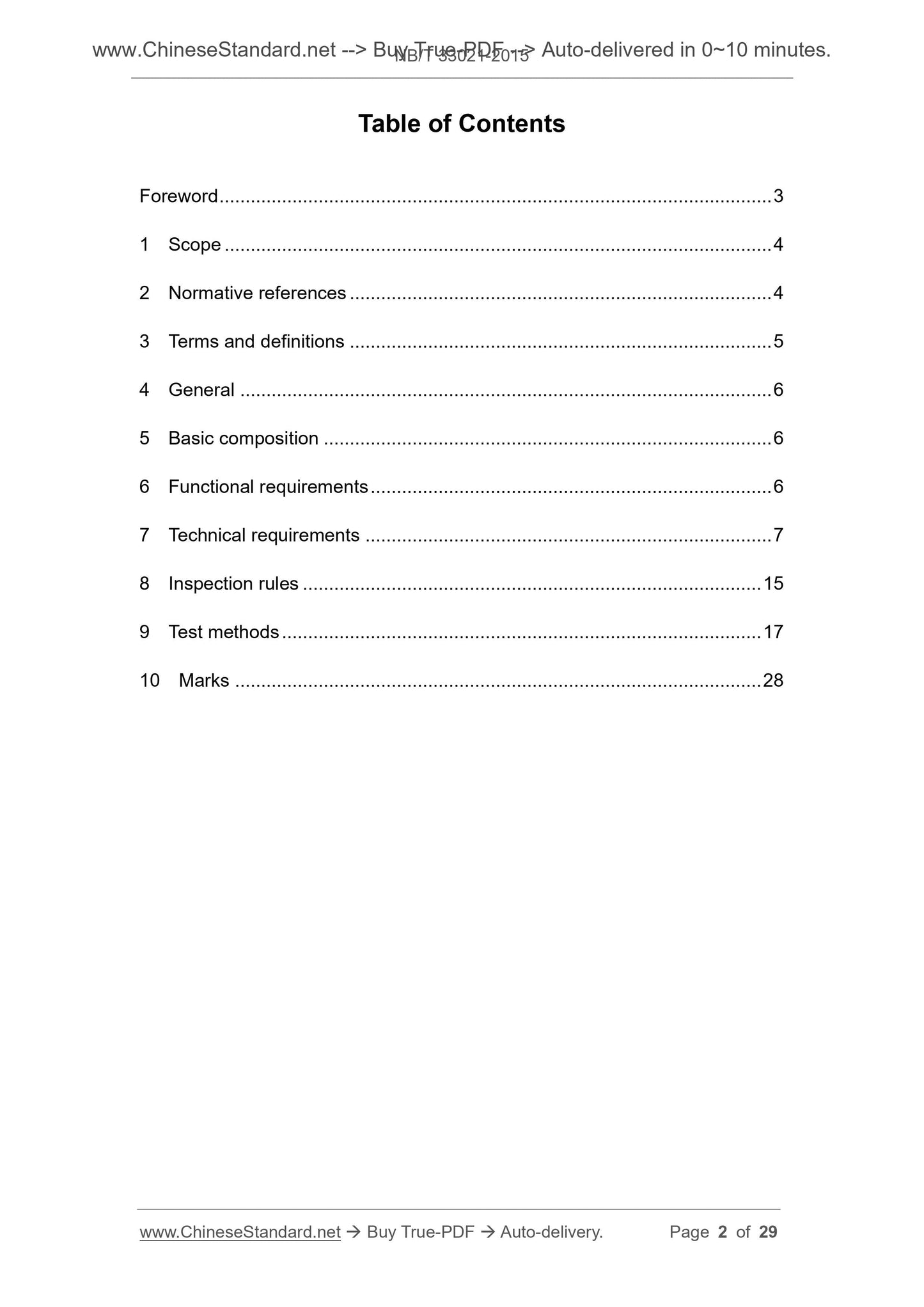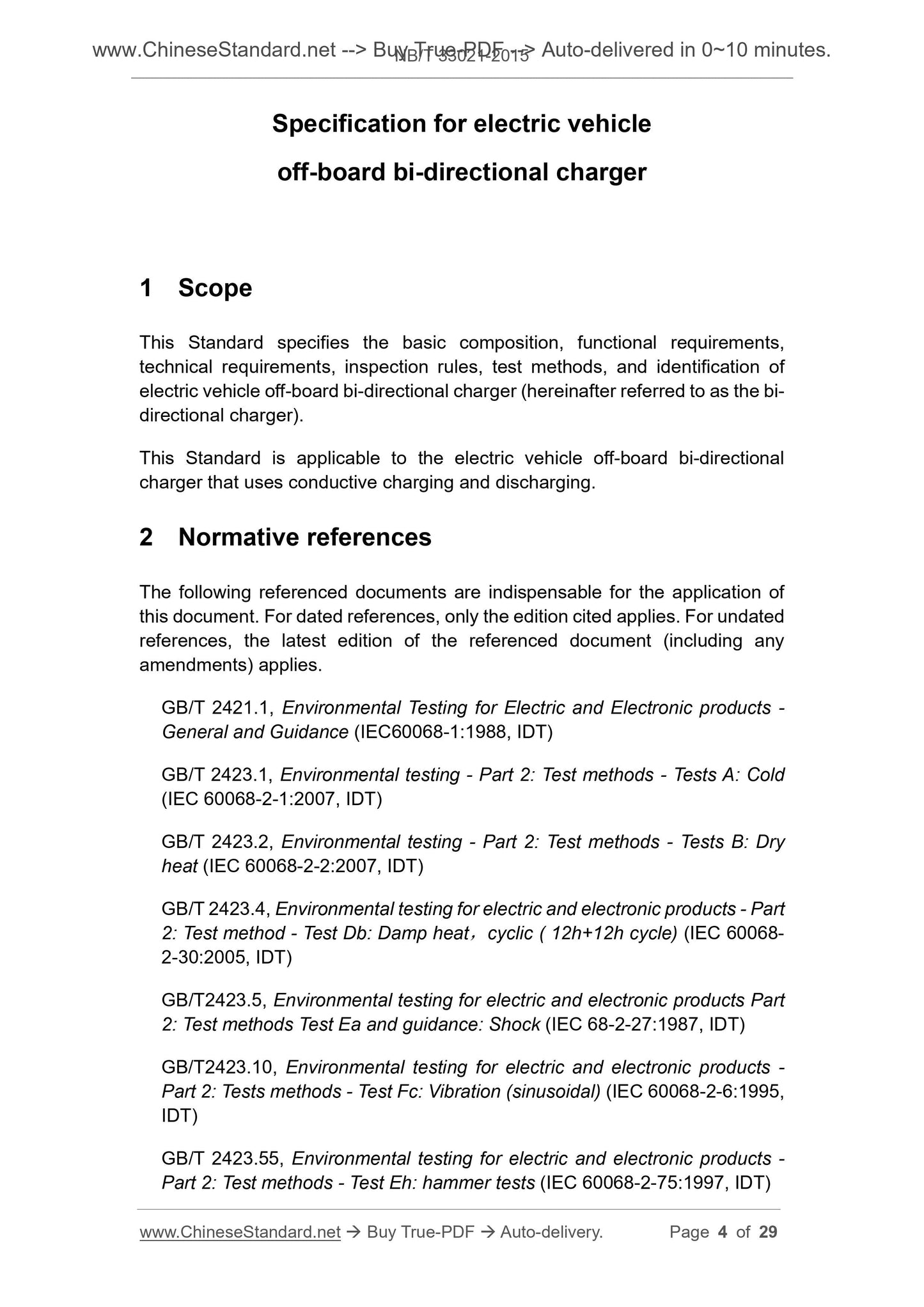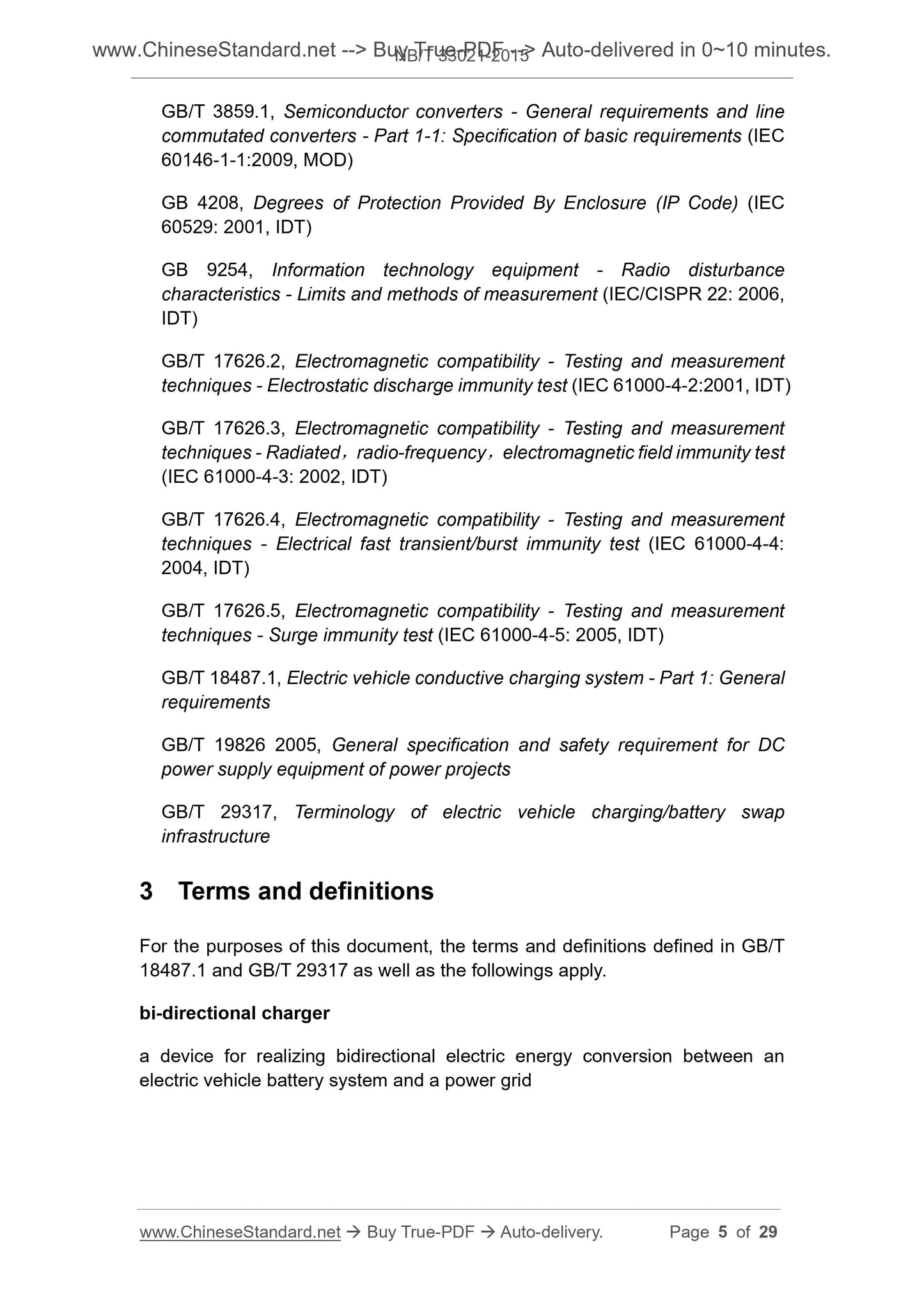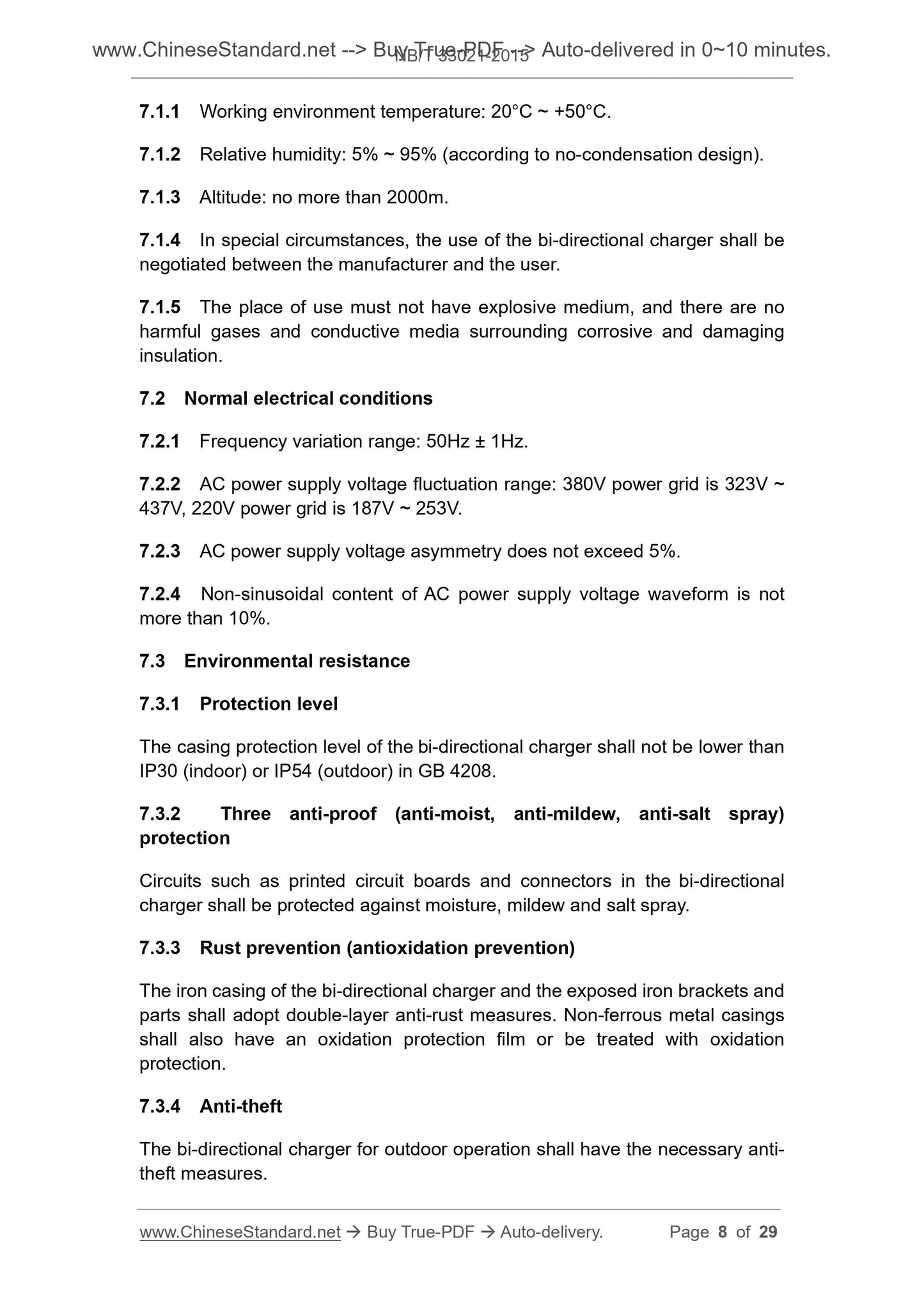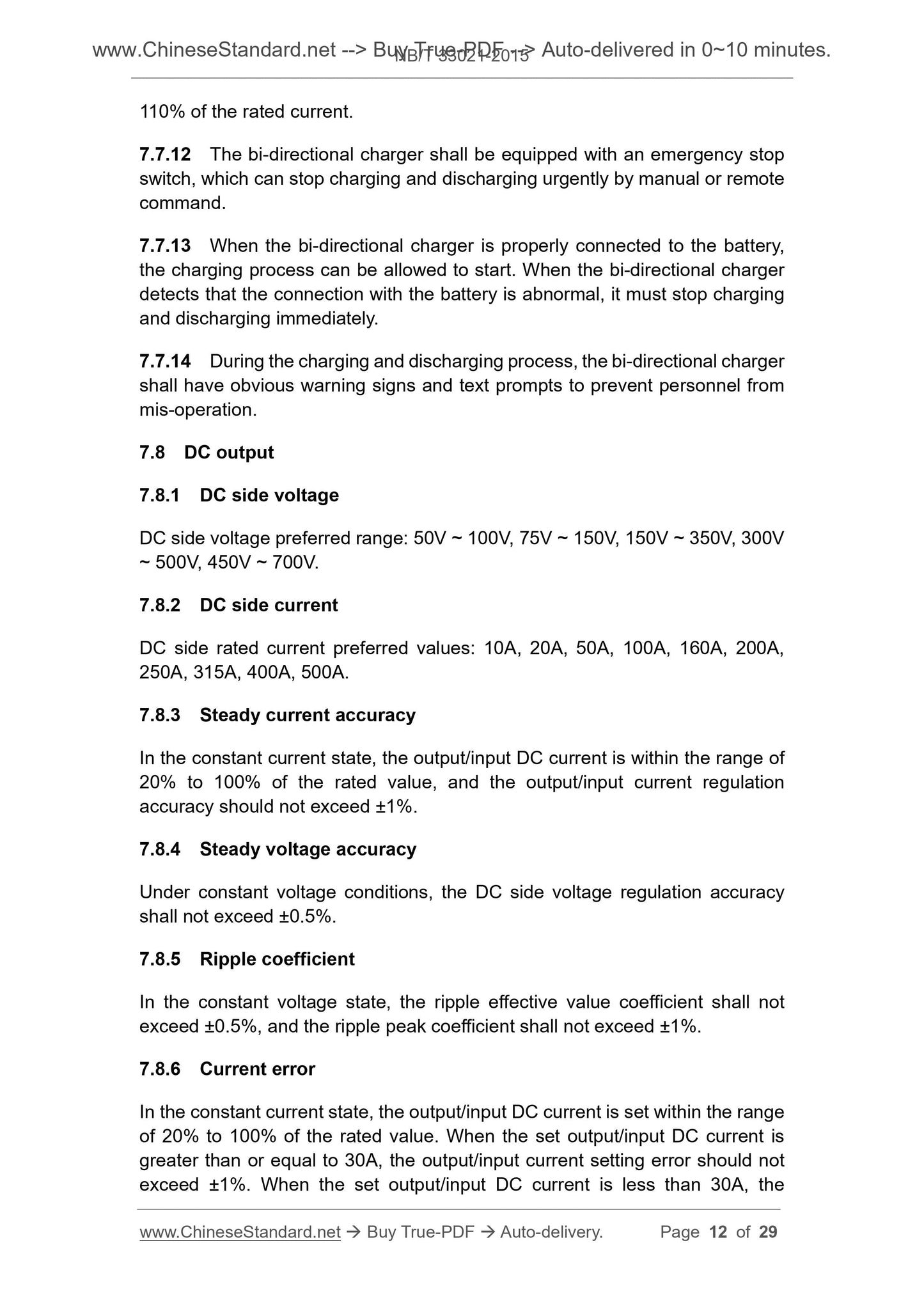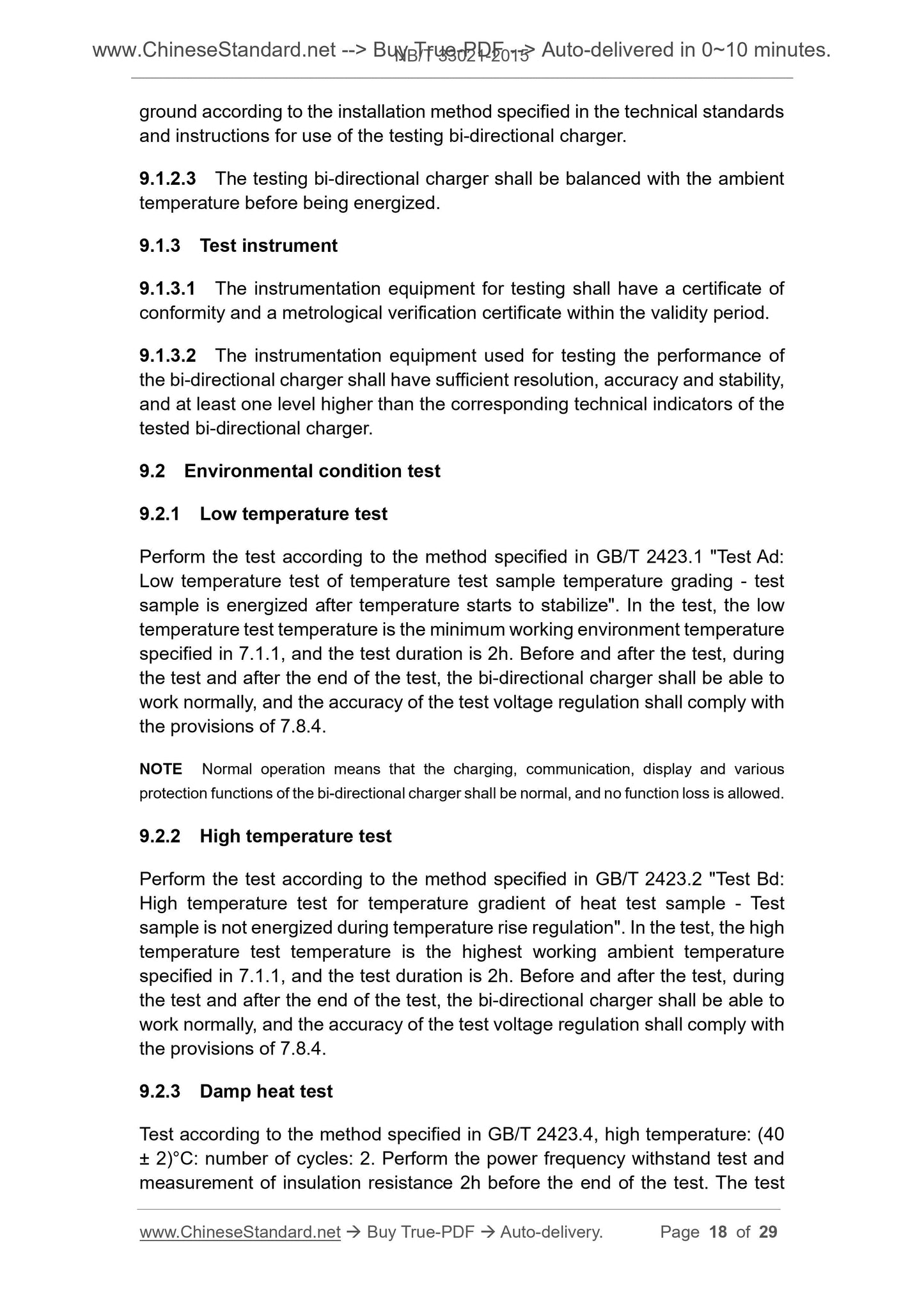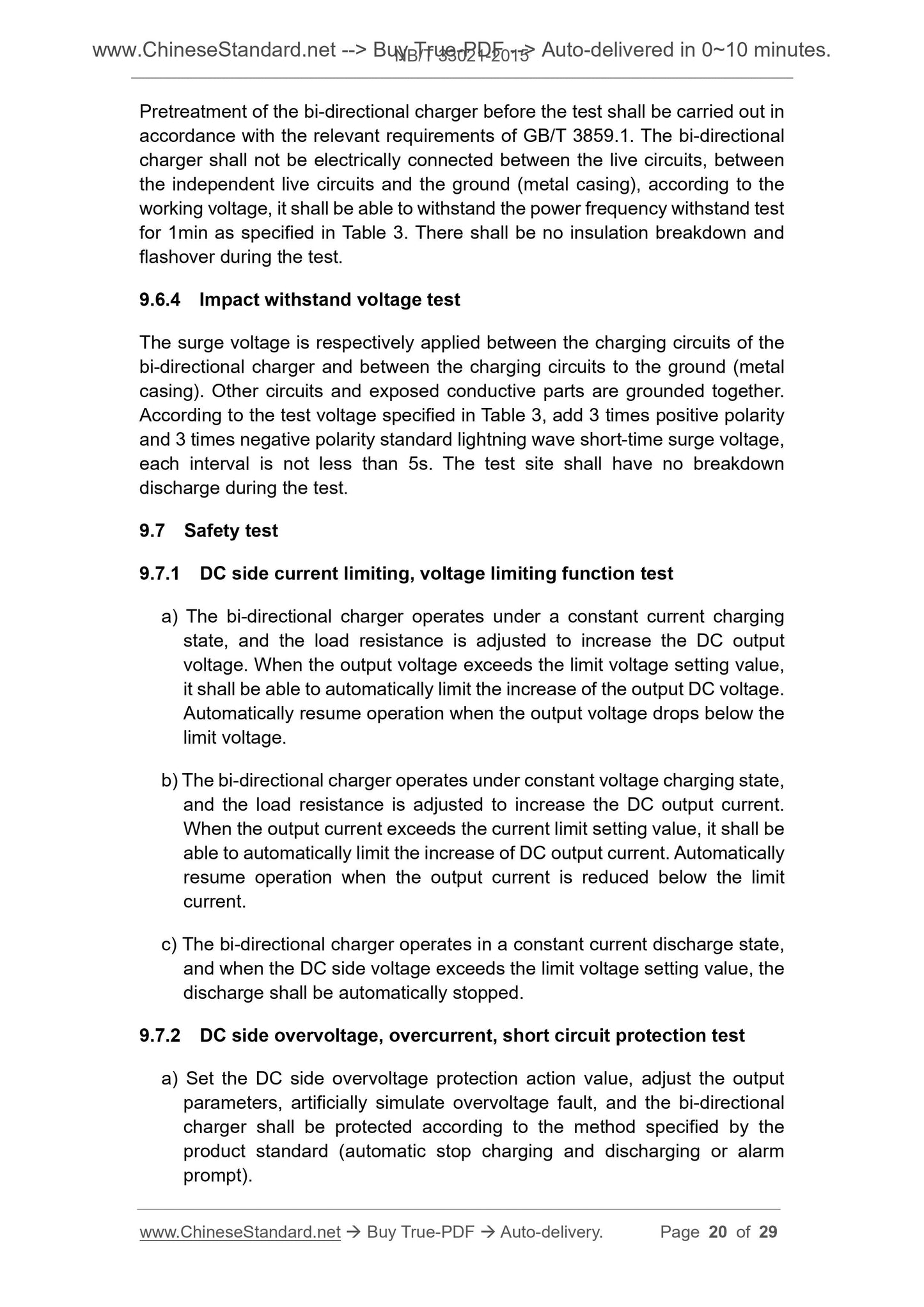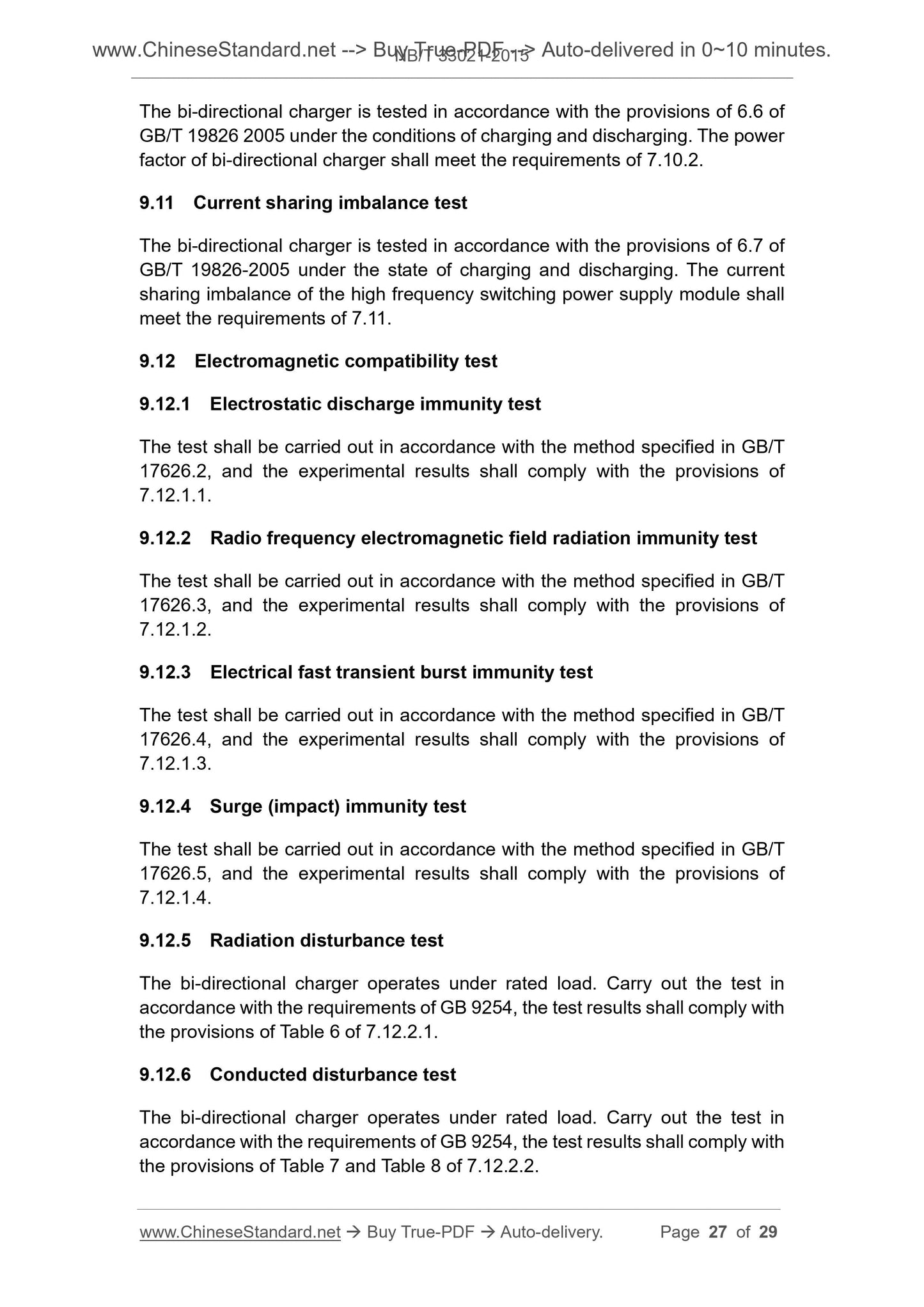1
/
of
9
www.ChineseStandard.us -- Field Test Asia Pte. Ltd.
NB/T 33021-2015 English PDF (NB/T33021-2015)
NB/T 33021-2015 English PDF (NB/T33021-2015)
Regular price
$350.00
Regular price
Sale price
$350.00
Unit price
/
per
Shipping calculated at checkout.
Couldn't load pickup availability
NB/T 33021-2015: Specification for electric vehicle off-board bi-directional charger
Delivery: 9 seconds. Download (and Email) true-PDF + Invoice.Get Quotation: Click NB/T 33021-2015 (Self-service in 1-minute)
Newer / historical versions: NB/T 33021-2015
Preview True-PDF
Scope
This Standard specifies the basic composition, functional requirements,technical requirements, inspection rules, test methods, and identification of
electric vehicle off-board bi-directional charger (hereinafter referred to as the bi-
directional charger).
This Standard is applicable to the electric vehicle off-board bi-directional
charger that uses conductive charging and discharging.
Basic Data
| Standard ID | NB/T 33021-2015 (NB/T33021-2015) |
| Description (Translated English) | Specification for electric vehicle off-board bi-directional charger |
| Sector / Industry | Energy Industry Standard (Recommended) |
| Classification of Chinese Standard | K81 |
| Classification of International Standard | 29.200 |
| Word Count Estimation | 18,169 |
| Date of Issue | 2015-04-02 |
| Date of Implementation | 2015-09-01 |
| Quoted Standard | GB/T 2421.1; GB/T 2423.1; GB/T 2423.2; GB/T 2423.4; GB/T 2423.5; GB/T 2423.10; GB/T 2423.55; GB/T 3859.1; GB 4208; GB 9254; GB/T 17626.2; GB/T 17626.3; GB/T 17626.4; GB/T 17626.5; GB/T 18487.1; GB/T 19826-2005; GB/T 29317 |
| Regulation (derived from) | ?Energy Bureau Announcement 2015 No. 3 |
| Issuing agency(ies) | National Energy Administration |
| Summary | This standard specifies the basic structure, functional requirements, technical requirements, inspection rules, test methods, and identification of charging and discharging devices for non-vehicular charging and discharging devices for electric vehicles (hereinafter referred to as charge and discharge devices). This standard applies to the use of conduction charge and discharge methods of electric vehicles with non-vehicle charging and discharging devices. |
Share
